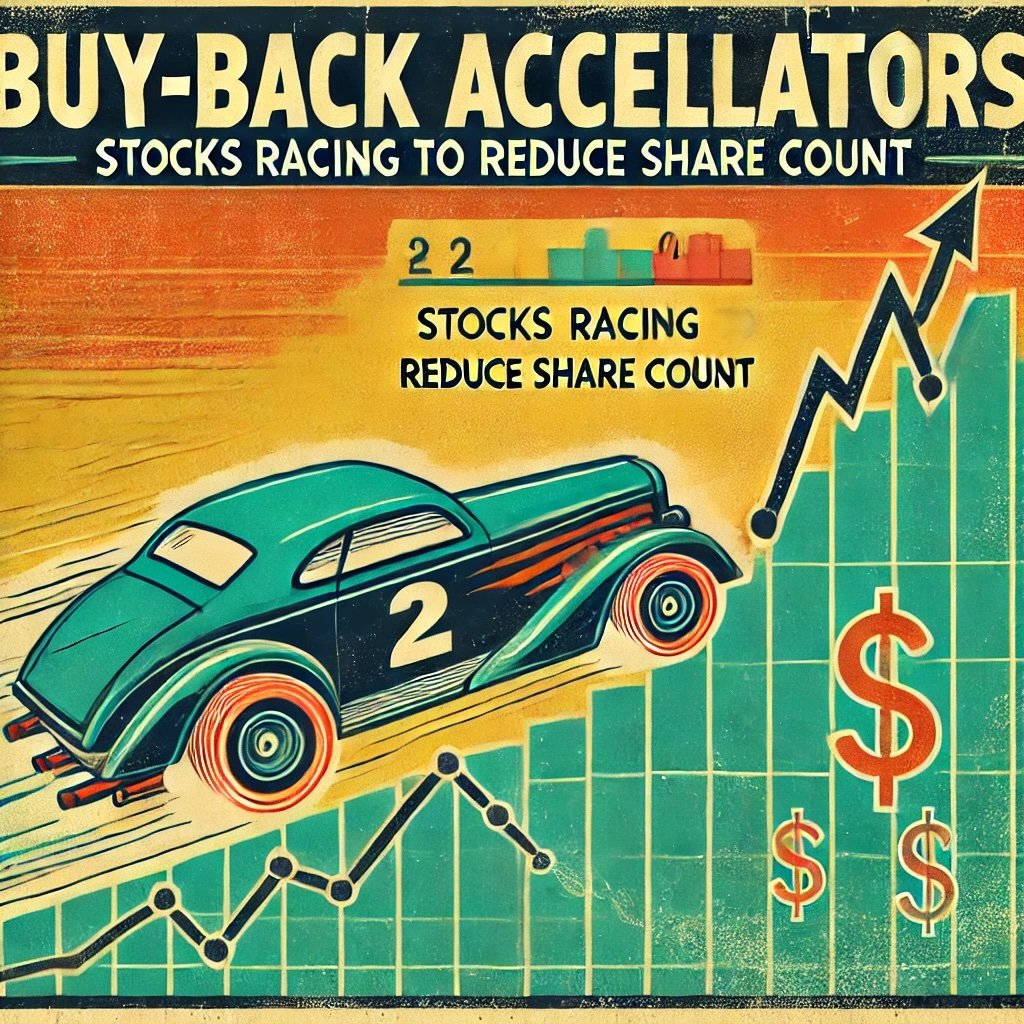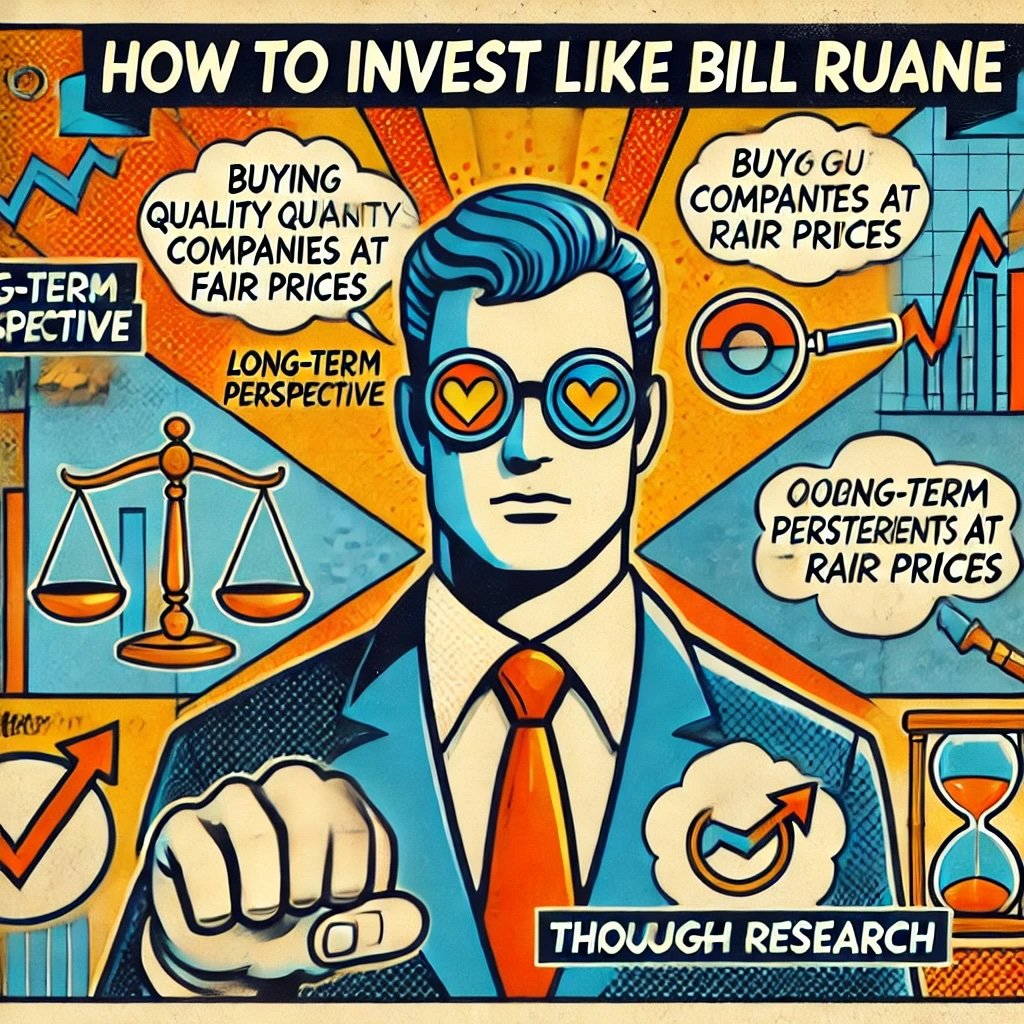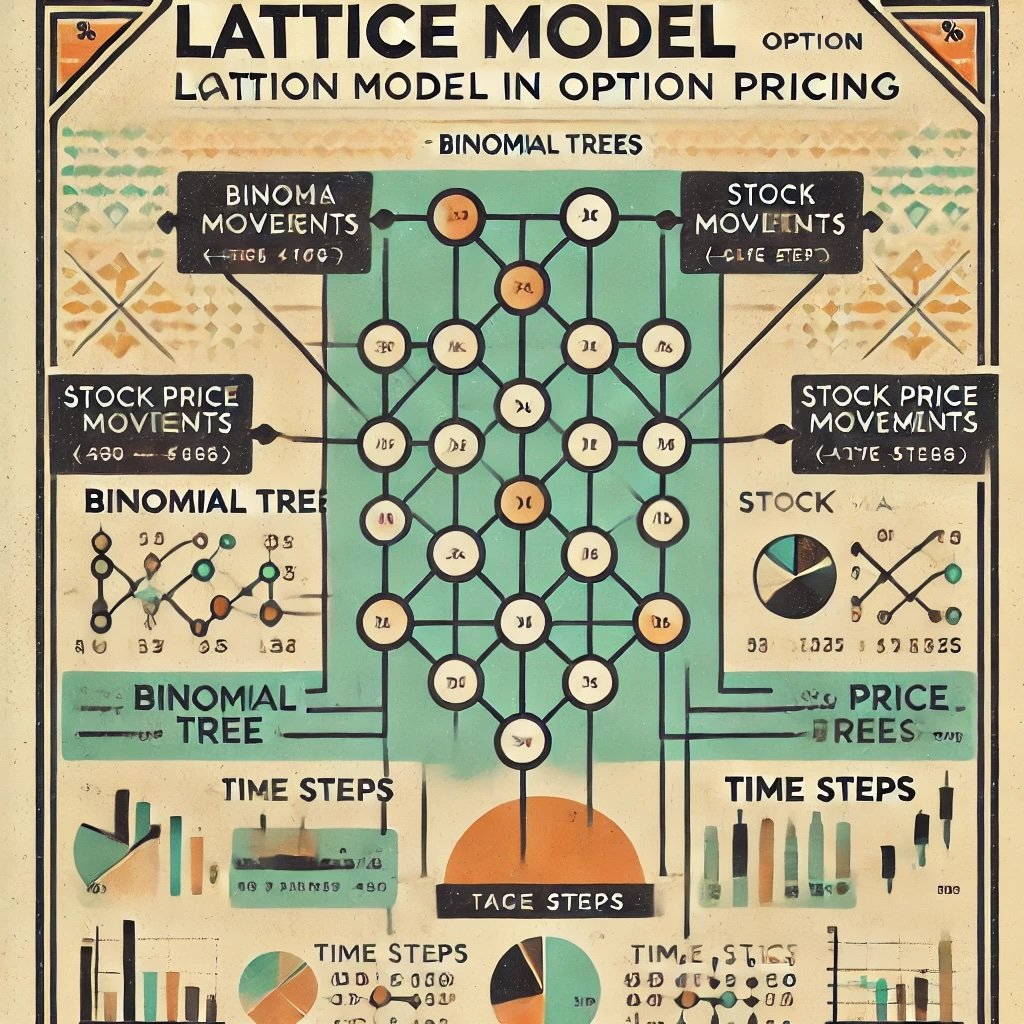Housing bubbles are like financial storms—they build slowly, often fueled by speculation, easy credit, and soaring property values. Then, almost without warning, they burst, leaving economic devastation in their wake. A housing bubble occurs when property prices rise rapidly to levels far beyond their actual value, driven by demand that’s unsustainable. When the bubble finally pops, it can lead to a sharp decline in home prices, widespread foreclosures, and significant financial losses for homeowners and investors alike. The ripple effects can be felt across the economy, leading to recessions, higher unemployment, and a loss of consumer confidence.
source: Living Big In A Tiny House
Introduction to Tiny Houses
Enter tiny houses—a trend that’s been gaining momentum in recent years, particularly among those seeking a simpler, more affordable way of living. Tiny houses, typically ranging from 100 to 400 square feet, offer a minimalist lifestyle without the burden of a hefty mortgage. They’re more than just small homes; they represent a shift in thinking about what we need in a living space and how we want to live our lives. The growing popularity of tiny houses can be attributed to a desire for financial freedom, a smaller environmental footprint, and the flexibility to live life on your own terms.

Overview of Housing Bubbles
Could tiny houses be the answer to the housing bubble problem? We’ll delve into the economics of tiny houses, examine their potential to stabilize housing markets, and weigh the pros and cons of embracing tiny living as a solution to housing market volatility. Whether you’re a tiny house enthusiast or simply curious about alternative housing solutions, this article will provide insights into how tiny houses might just play a role in preventing the next big housing crisis.
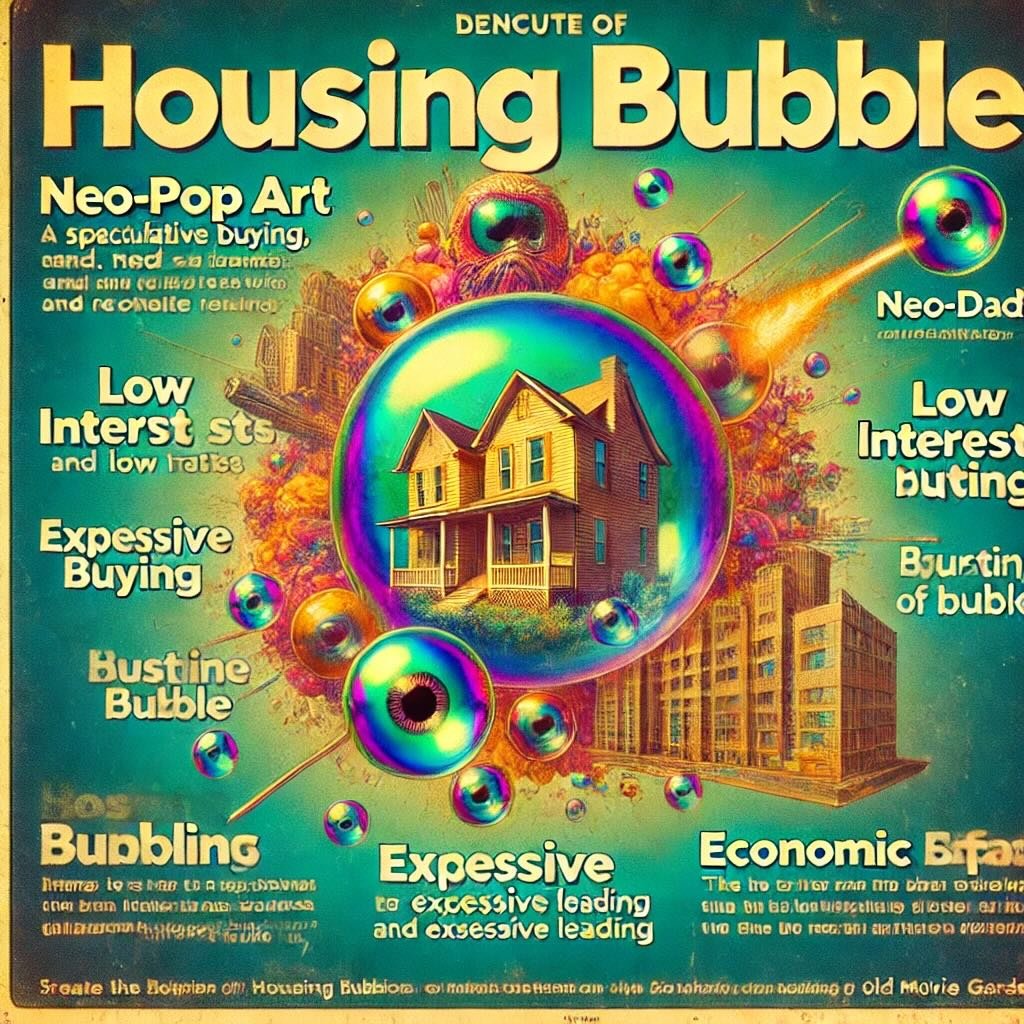
Understanding Housing Bubbles
Definition and Causes of Housing Bubbles
Housing bubbles are like a house of cards—built on shaky foundations, they eventually come crashing down. But what exactly causes these bubbles? At the core, a housing bubble forms when property prices skyrocket far beyond their intrinsic value, driven by a potent mix of speculative buying, low interest rates, and excessive lending.
Speculative buying plays a huge role. As home prices rise, more and more buyers enter the market, not to live in the homes, but to flip them for a quick profit. This speculative frenzy drives prices even higher, creating an unsustainable cycle. Low interest rates also contribute, making borrowing cheaper and encouraging more people to take out mortgages they might not be able to afford long-term. Finally, excessive lending practices—think subprime mortgages and lax lending standards—add fuel to the fire, allowing people with shaky credit to buy homes. It’s a perfect storm that inevitably leads to trouble.
Economic Impact of Housing Bubbles
When a housing bubble bursts, the fallout can be devastating. Picture this: property values plummet, leaving homeowners with mortgages that far exceed the worth of their homes. This situation, known as being “underwater,” often leads to a wave of foreclosures as people abandon properties they can no longer afford. But the impact isn’t confined to the housing market alone—it spills over into the broader economy, triggering financial crises, skyrocketing unemployment, and widespread economic recession.
The domino effect can be brutal. Financial institutions, many of which hold large amounts of mortgage debt, suffer massive losses. Stock markets tumble as investors panic, and consumer spending dries up, further deepening the economic downturn. The bursting of a housing bubble doesn’t just pop real estate prices; it can send shockwaves through the entire economy.
Historical Examples of Housing Bubbles
History provides several stark examples of housing bubbles and their catastrophic aftermaths. The most notorious in recent memory is the 2008 financial crisis, often referred to as the Great Recession. Leading up to 2008, a combination of loose lending practices, speculative buying, and skyrocketing home prices created a massive housing bubble. When it burst, it didn’t just wipe out trillions in home equity—it nearly brought down the global financial system.
Another example is Japan’s housing bubble in the late 1980s. During this period, Japanese real estate prices soared to astronomical levels. But when the bubble burst in the early 1990s, it led to what’s now known as the Lost Decade—a period of economic stagnation that lasted well into the 2000s. These historical examples serve as powerful reminders of the risks inherent in housing bubbles and the wide-ranging impacts they can have on economies around the world.

The Tiny House Movement
What Are Tiny Houses?
Tiny houses are exactly what they sound like—dwellings that pack a lot of living into a little space. Typically, these homes range from 100 to 400 square feet, but don’t let their small size fool you. They’re ingeniously designed to make the most out of every square inch. Imagine a cozy, compact space where everything has its place. A loft bed, multi-functional furniture, and clever storage solutions are just the beginning.
The cost? That’s one of the major selling points. Tiny houses often come with a much smaller price tag compared to traditional homes. Depending on the materials used and whether you build it yourself or hire a builder, a tiny house can cost anywhere from $20,000 to $100,000. Features can vary, too—some tiny homes are fully off-grid with solar panels and composting toilets, while others are connected to utilities just like a regular house.
Reasons for the Popularity of Tiny Houses
So, why are so many people downsizing to these pint-sized abodes? For starters, affordability is a huge draw. In a world where the cost of homeownership seems to climb higher every year, tiny houses offer a way to own property without being shackled to a massive mortgage. For many, this financial freedom is life-changing.
But there’s more to the tiny house movement than just saving money. Minimalism plays a big role. As people grow tired of the clutter and chaos that comes with owning too much stuff, tiny houses present an opportunity to simplify. Living small forces you to prioritize what really matters—no room for excess here.
Environmental concerns also drive the tiny house trend. Smaller homes naturally have a smaller footprint. They use fewer building materials, require less energy to heat and cool, and often incorporate sustainable technologies like solar power. For those looking to reduce their impact on the planet, a tiny house can be a big step in the right direction.
Tiny Houses vs. Traditional Housing
When you stack tiny houses against traditional homes, the differences are striking. Cost is perhaps the most obvious. While a traditional home might set you back hundreds of thousands of dollars, a tiny house can be built or bought for a fraction of that price. This lower cost translates into less debt and more financial freedom, a benefit that’s hard to ignore.
Lifestyle is another area where tiny houses stand out. Living in a tiny house means embracing a simpler way of life. You’re forced to declutter, to live with less, and to focus on what truly matters. For many, this minimalist lifestyle is a welcome change from the consumer-driven culture of larger homes. However, it’s not without its challenges—living in such a small space requires creativity, adaptability, and sometimes, a willingness to sacrifice a bit of comfort and convenience.
When it comes to practicality, traditional homes have their advantages. They offer more space, which can be important for families or those who work from home. Traditional homes are also often easier to finance, insure, and resell, which can be significant considerations depending on your circumstances. On the other hand, tiny houses offer flexibility—they can be built on wheels, making them mobile, and they often require less maintenance, leaving more time and money for other pursuits.
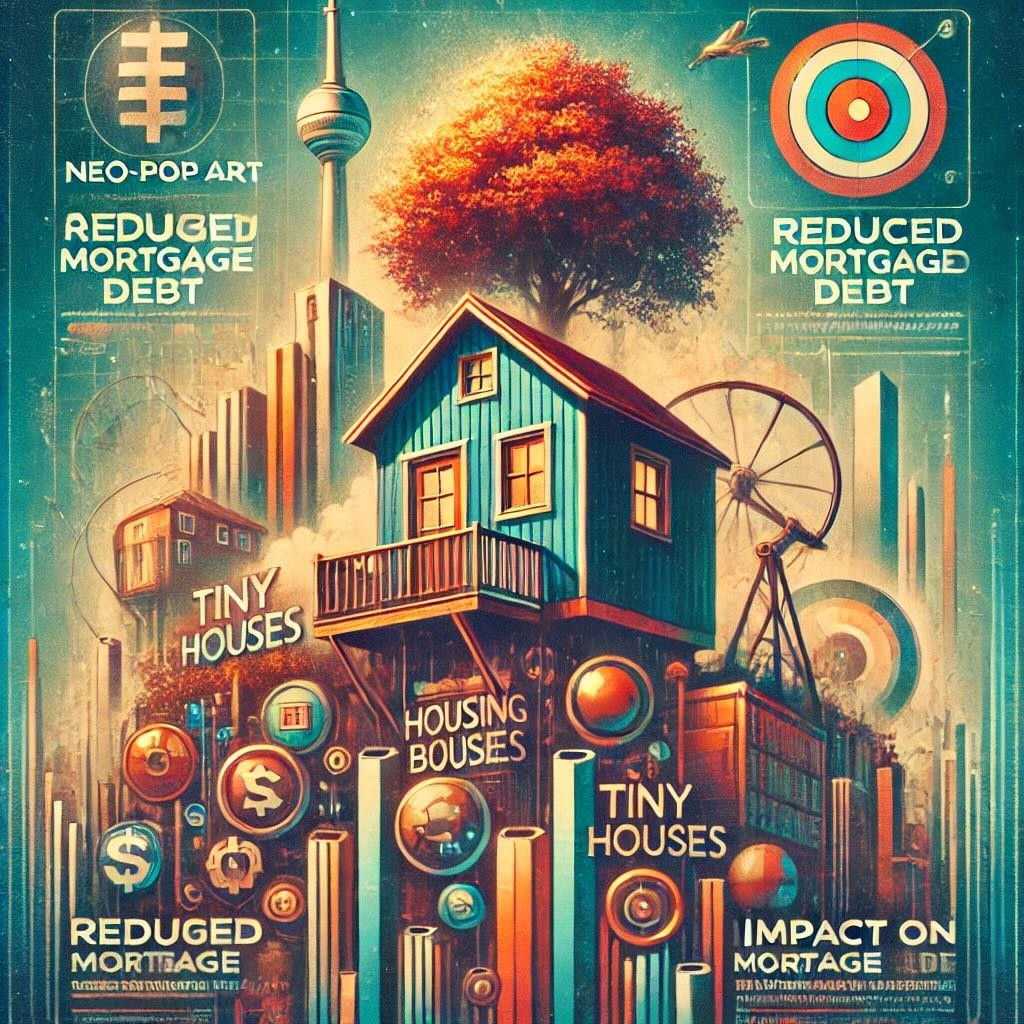
Tiny Houses as a Potential Solution to Housing Bubbles
Affordability and Accessibility
One of the biggest draws of tiny houses is their affordability. In a market where traditional home prices are skyrocketing, tiny houses offer a breath of fresh air. With a much lower price tag, these homes make homeownership more accessible to a broader range of people. Whether you’re a young professional just starting out, a retiree looking to downsize, or anyone in between, the cost of a tiny house can be a game-changer.
By lowering the barrier to entry, tiny houses could help reduce speculative buying, which is often a key factor in housing bubbles. When homes are affordable, they’re less likely to be snapped up by investors looking to flip properties for a quick profit. Instead, they’re more likely to be owned by people who plan to live in them, contributing to market stability and reducing volatility.
Reduced Risk of Mortgage Debt
Another advantage of tiny houses is the significantly reduced mortgage burden. Because tiny houses cost less, they typically come with much smaller mortgages—if a mortgage is even necessary at all. This lower debt load means homeowners are less vulnerable to economic downturns.
When the economy takes a hit, homeowners with smaller mortgages are less likely to default or face foreclosure, which can help prevent the kind of widespread financial distress that contributes to housing market crashes. In essence, tiny houses could be a buffer against the economic shocks that often accompany housing bubbles, providing a more stable foundation for the housing market as a whole.
Impact on Real Estate Markets
Could a shift towards tiny houses stabilize real estate markets? It’s a possibility worth considering. By diversifying housing options, tiny houses introduce a new dynamic into the market. Instead of a one-size-fits-all approach where everyone aims for the conventional home, tiny houses offer an alternative that caters to different needs and budgets.
This diversification could prevent the overinflation of housing prices, as more people opt for smaller, more affordable homes rather than stretching their finances to buy bigger properties. If more buyers choose tiny houses, it could help cool down overheated markets, reducing the risk of bubbles forming in the first place. It’s not a silver bullet, but it’s a step towards a more balanced and resilient housing market.
Environmental and Economic Benefits
Tiny houses aren’t just good for your wallet—they’re also good for the planet. With their smaller footprint, tiny houses use fewer resources, both in construction and in day-to-day living. Less energy is needed to heat and cool a tiny house, and the materials used to build one are often more sustainable.
From an economic standpoint, the rise of tiny houses could also lead to more sustainable housing development. As more people embrace tiny living, there could be a shift away from sprawling suburban developments towards more compact, environmentally friendly communities. This could reduce the environmental impact of housing, from lower energy consumption to less land being used for construction.
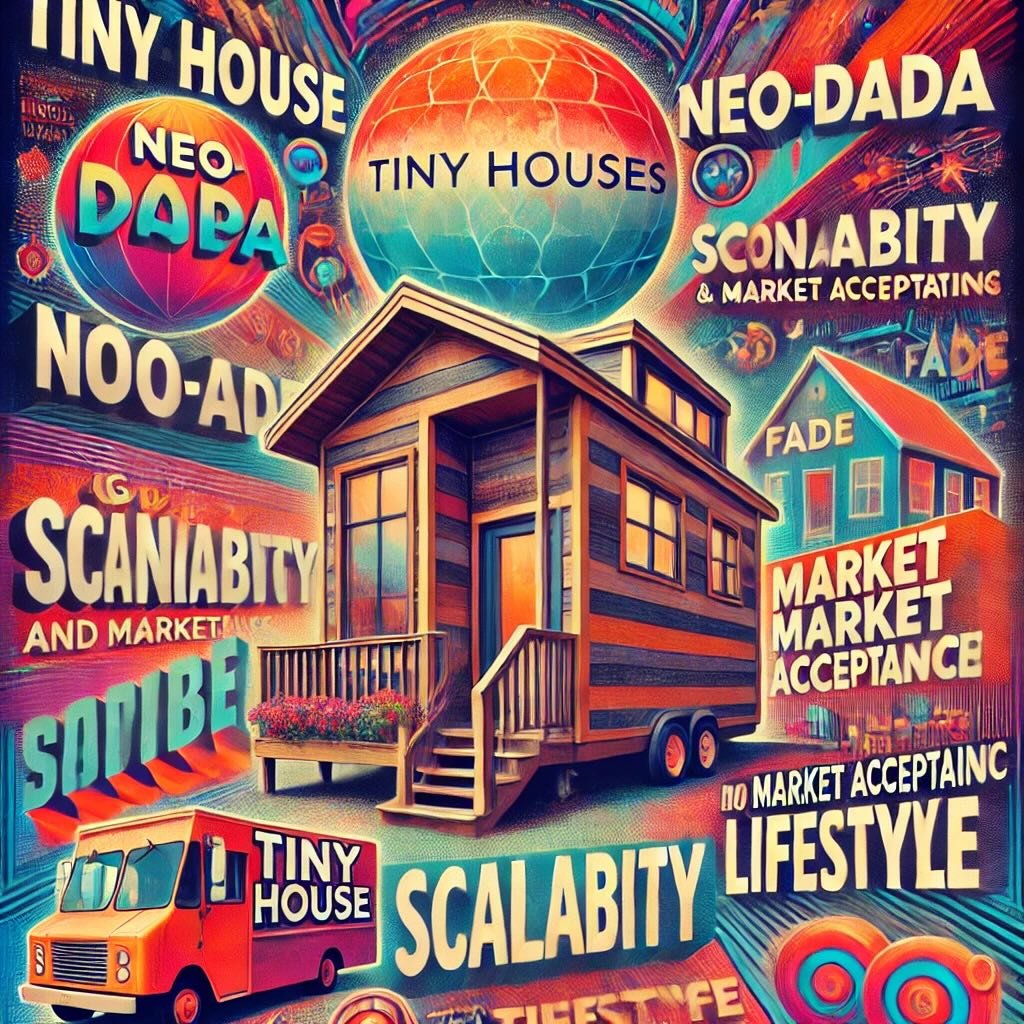
Challenges and Limitations of Tiny Houses
Zoning Laws and Regulations
Tiny houses might be charming, but navigating the legal landscape around them can be anything but. One of the biggest hurdles tiny house enthusiasts face is the maze of zoning laws and regulations. In many areas, local zoning codes simply weren’t designed with tiny houses in mind. They often require a minimum square footage for homes, which tiny houses don’t meet.
Then there are building codes, which can vary significantly from one place to another. These codes dictate everything from ceiling heights to window sizes, and tiny houses, with their compact design, sometimes fall short of these requirements. Additionally, there’s the issue of where you can legally park or place a tiny house. Some communities classify tiny houses as RVs, which limits where they can be permanently situated. Others may not allow tiny houses on wheels at all. All of this adds up to a regulatory headache that can make it challenging to live tiny legally.
Scalability and Market Acceptance
While tiny houses are gaining popularity, the question of scalability remains. Can they truly be scaled up as a widespread solution to housing challenges? That’s a tougher nut to crack. On a small scale, tiny houses are great—they offer an affordable, eco-friendly option for those who choose this lifestyle. But when it comes to broader market acceptance, there are some significant obstacles.
For one, the traditional real estate market doesn’t quite know what to do with tiny houses. They don’t fit neatly into the established categories of single-family homes or even condos. This can make financing, insuring, and reselling a tiny house more complicated. And let’s not forget about perceptions. While some see tiny houses as a bold, innovative way to live, others view them as a fad or, worse, as a sign of economic struggle rather than choice. Scaling up tiny houses to a level where they’re a mainstream option will require a shift not just in policy but in public perception as well.
Lifestyle Considerations
Living in a tiny house isn’t for everyone. While the idea of a minimalist lifestyle is appealing to many, the practicalities can be a different story. Space is the most obvious constraint. With only a few hundred square feet to work with, every inch has to be used wisely. Storage is minimal, and there’s little room for extras. For some, this is a liberating way to live; for others, it’s claustrophobic.
Family life in a tiny house presents its own set of challenges. Raising children in such a small space requires creativity and a strong commitment to minimalism. Privacy can be hard to come by, and the lack of space for things like toys, school supplies, or even a quiet corner to work can be a deal-breaker for many families.
Then there’s the issue of adaptability. A tiny house might work great when you’re single or part of a couple, but what happens when your life circumstances change? Growing families, new hobbies, or the need for a home office can quickly make a tiny house feel too tiny. While tiny houses offer an intriguing alternative to traditional living, they’re not without significant lifestyle trade-offs that need careful consideration.
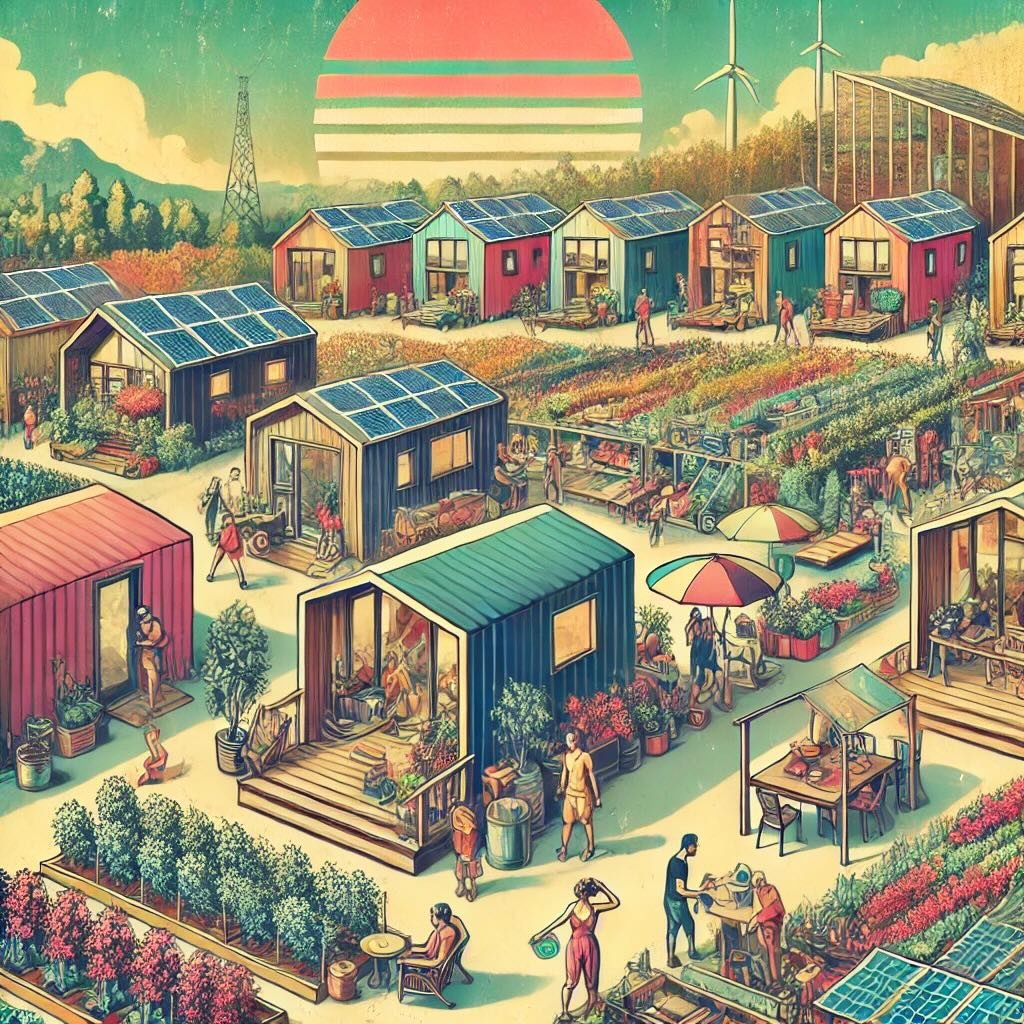
Case Studies and Real-World Examples
Communities Embracing Tiny Houses
Across the country, a growing number of communities are recognizing the potential of tiny houses to address housing challenges. One notable example is Portland, Oregon, a city that has become a hub for the tiny house movement. Portland’s progressive zoning laws have made it easier for residents to build and live in tiny homes, whether on wheels or foundations. The city has even embraced tiny house villages as a solution to homelessness, creating communities where people can live affordably and with dignity.
Another example is Austin, Texas, where tiny houses are being integrated into the urban landscape. Austin has a dedicated tiny house community called “Village Farm,” a neighborhood where residents live in tiny homes on a working farm. This community not only provides affordable housing but also fosters a sense of belonging and sustainability. The city has also supported initiatives to use tiny houses as part of affordable housing projects, providing a model that other cities could follow.
In Fresno, California, tiny houses have been legally recognized as backyard cottages, or accessory dwelling units (ADUs). This move has allowed homeowners to place tiny houses on their property as rental units or extra living space, helping to alleviate housing shortages while providing additional income for homeowners. Fresno’s approach shows how tiny houses can be seamlessly integrated into existing neighborhoods, offering a flexible solution to housing needs.
Success Stories and Lessons Learned
Tiny house living has changed lives, and there are plenty of success stories to prove it. Take the case of Jenna Spesard, a blogger and traveler who built her own tiny house and hit the road. Jenna’s tiny house allowed her to pay off debt, save money, and live a life of adventure—all while carrying her home with her. Her experience highlights the financial freedom that tiny house living can offer, particularly for those who are willing to embrace a minimalist lifestyle.
Another inspiring story comes from Michelle Boyle, a single mother who turned to tiny house living after facing financial struggles. Michelle built her tiny house from the ground up, creating a beautiful, functional space that met all her needs. The reduced cost of living allowed her to stabilize her finances, save money, and even start a small business. For Michelle, the tiny house was more than just a place to live—it was a path to financial independence and personal empowerment.
There’s also the story of Jay Shafer, often credited as the godfather of the modern tiny house movement. Jay built his first tiny house over 20 years ago, long before the concept became mainstream. His motivation? To live simply, without the burden of a large mortgage or unnecessary possessions. Jay’s tiny house not only provided him with a debt-free lifestyle but also sparked a movement that has inspired thousands of others to rethink what home really means.

Tiny Houses and the Future of Housing
Potential Role in Future Housing Strategies
As the housing market continues to evolve, tiny houses could play a pivotal role in future housing strategies. Urban planners and policymakers are increasingly looking for creative solutions to address housing shortages, affordability issues, and environmental concerns. Tiny houses, with their low cost and small footprint, fit neatly into these broader strategies. They offer a flexible, scalable option that can be adapted to a variety of needs and locations.
Imagine cities where tiny houses fill the gaps—literally and figuratively. In underutilized urban spaces, tiny houses could transform vacant lots into vibrant micro-neighborhoods, providing affordable housing without the need for sprawling developments. In suburban areas, they could serve as accessory dwelling units, offering additional living space for extended family or rental income. And in rural areas, tiny houses could support sustainable living initiatives, blending seamlessly into the landscape while promoting a minimalist, eco-friendly lifestyle.
Integration with Other Housing Solutions
Tiny houses don’t have to stand alone. In fact, they’re most effective when integrated with other housing solutions. Take affordable housing initiatives, for example. Tiny houses could be a key component of these programs, offering a low-cost alternative that’s both accessible and adaptable. They could be used to create tiny house villages, providing community-oriented living spaces that foster social connections and mutual support.
Co-living spaces are another area where tiny houses could shine. By combining the privacy of a tiny home with shared amenities like kitchens, gardens, and workspaces, co-living communities could offer a balanced lifestyle that’s both affordable and socially enriching. This hybrid approach could appeal to a wide range of people, from young professionals to retirees, who are looking for a sense of community without the financial burden of a traditional home.
Tiny houses could also complement sustainable housing developments. Imagine eco-villages where tiny homes are powered by renewable energy, surrounded by permaculture gardens, and built from sustainable materials. These communities could serve as models for low-impact living, demonstrating how we can reduce our environmental footprint while still enjoying the comforts of modern life.
Long-Term Viability
The big question: Are tiny houses here to stay? When it comes to long-term viability, tiny houses offer both promise and challenges. On the one hand, their affordability, flexibility, and sustainability make them an attractive option in a world where housing costs continue to rise and environmental concerns grow more urgent. Tiny houses offer a way to live simply and efficiently, aligning with a shift towards minimalism and conscious consumption.
However, there are hurdles to overcome. For tiny houses to become a mainstream solution, there needs to be greater acceptance from both the market and regulatory bodies. This means adapting zoning laws, building codes, and financing options to accommodate tiny homes, as well as shifting public perceptions to view them as legitimate, long-term housing options.
In the context of housing bubbles, tiny houses could offer a stabilizing influence. By providing affordable, low-risk housing options, they could help prevent the kind of speculative frenzy that leads to bubbles. Additionally, their smaller mortgages and lower financial commitment make them less vulnerable to economic downturns, which could contribute to a more stable housing market overall.
12-Question FAQ: Are Tiny Houses the Answer to Housing Bubbles?
1) Are tiny houses a silver-bullet solution to housing bubbles?
Short answer: no. They can ease pressure (by adding lower-cost supply and lowering household leverage), but bubbles are driven by macro forces—credit cycles, speculation, land/permit scarcity, and policy. Tiny homes help at the margin when paired with zoning reform, financing access, and disciplined lending.
2) What exactly is a housing bubble—and why do they burst?
A bubble is prolonged price growth detached from incomes/rents, fueled by cheap credit and speculative demand. It ends when credit tightens or sentiment turns; volumes fall, forced sellers rise, and prices re-anchor to fundamentals.
3) How can tiny houses improve affordability?
They lower entry costs (often 100–400 sq ft; materially cheaper to build/buy) and can expand supply quickly via infill, ADUs, and village models—particularly where land is costly but serviced lots exist.
4) Do tiny houses reduce systemic mortgage risk?
Often, yes. Smaller price tags mean smaller loans or no loan, lowering default severity and household debt service. At scale, that trims vulnerability to rate shocks—though it won’t neutralize broader macro risk.
5) What barriers limit tiny-home adoption?
Zoning & minimum-lot/size rules
Building codes / certification (e.g., treatment as RV vs dwelling)
Financing & insurance (non-standard collateral)
Hookups & infrastructure (utilities, parking, access)
6) Could lots of tiny homes crash local prices?
Unlikely. Most markets are supply-constrained; additional, small-format units mainly moderate rent/price growth and diversify options. Oversupply risk is local and policy-driven, not tiny-home specific.
7) Where do tiny houses fit best—urban, suburban, or rural?
Urban: ADUs and micro-infill near transit/utilities.
Suburban: Backyard cottages, pocket neighborhoods.
Rural: Villages and off-grid/low-impact living (but jobs/services can be limiting).
8) What are the lifestyle trade-offs?
Radical downsizing: limited storage, fewer private rooms, strict organization. Great for solos/couples or flexible families; tougher for larger households or those needing multiple workspaces.
9) How are tiny homes financed, insured, and resold?
On-foundation (code-compliant): closest to conventional mortgage/insurance; best resale.
On wheels (THOW): often titled like RV/manufactured; rely on personal/RV loans; insurance specialized; resale depends on certification and siting rights.
Pro tip: seek builders with third-party certification and plan for permitted, legal placement to protect value.
10) What’s the environmental impact?
Lower embodied carbon (less material), smaller energy loads, and potential for all-electric + solar. Clustering near services further cuts transport emissions.
11) Which policies make tiny houses actually work?
Legalize ADUs by right; relax minimum lot/size & parking.
Adopt tiny-home-friendly building code appendices and clear THOW standards.
Streamline utility hookups and site approvals.
Enable villages/co-ops on serviced land with shared amenities.
Offer standardized financing/insurance pathways.
12) How do we judge whether tiny houses blunt bubble risk?
Watch: (a) share of new stock that’s small/attainable, (b) price-to-income and price-to-rent trends, (c) household debt service ratios, (d) permits for ADUs/micro-infill, and (e) credit growth. If small-format supply rises while leverage and P/I cool, tiny homes are helping.
Quick takeaways
Tiny homes help affordability and resilience; they don’t replace macroprudential policy.
Best impact: pair with zoning reform + ADU legalization + sane credit.
Buyers: prioritize legal siting, code compliance, and exit options (resale or rental).
Educational content only—not financial, legal, or building code advice.
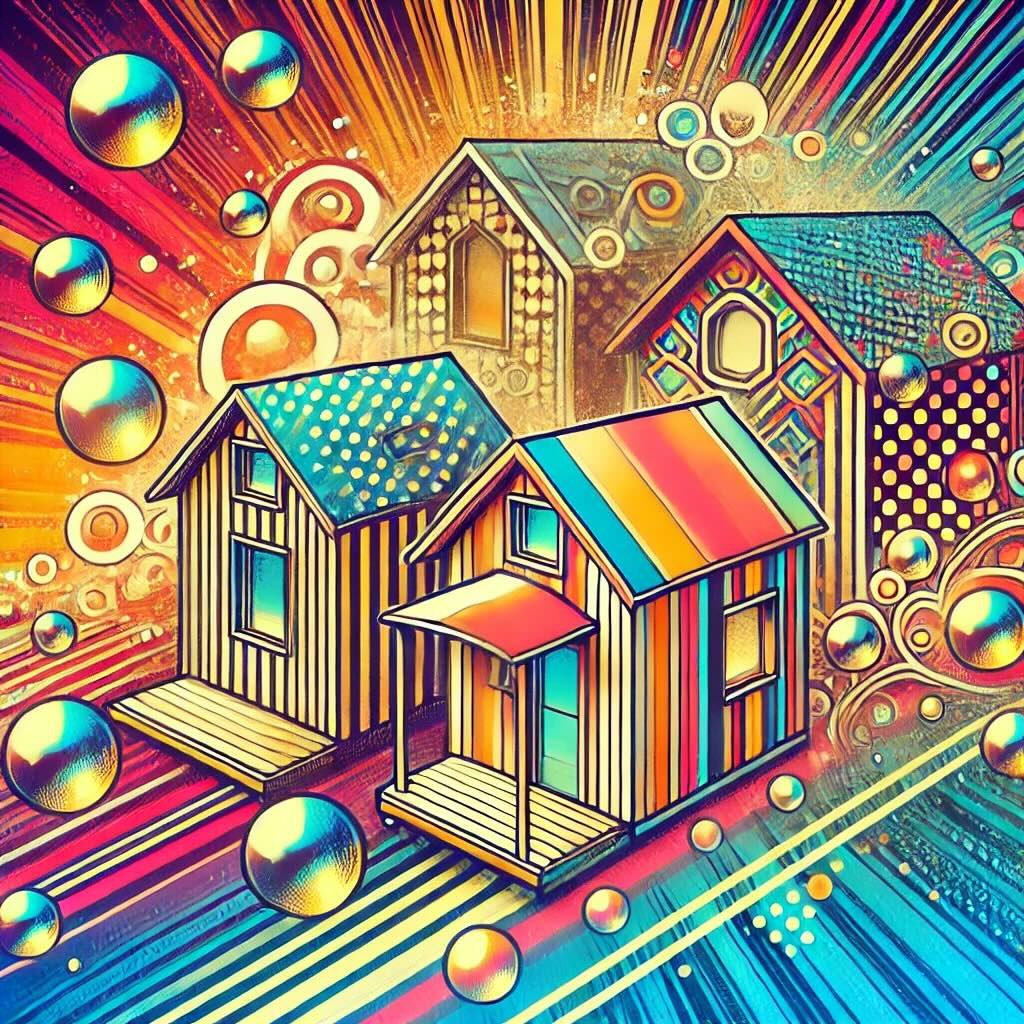
Conclusion
Tiny houses, with their small footprint and even smaller price tags, offer a fresh perspective on solving some of the housing market’s biggest challenges. On the plus side, they’re affordable, accessible, and environmentally friendly. Tiny houses reduce the risk of mortgage debt and could potentially stabilize real estate markets by diversifying housing options. They represent a lifestyle shift towards minimalism and sustainability, which aligns well with broader societal trends.
But, let’s not overlook the hurdles. Zoning laws and building regulations can be a nightmare for tiny house owners. Scalability remains a question mark, and there are significant lifestyle adjustments that come with living in a much smaller space. Tiny houses, while innovative, aren’t a one-size-fits-all solution. They might not be suitable for everyone, especially those with larger families or those who value more traditional living spaces.
Final Thoughts
Tiny houses might not completely eliminate housing bubbles or solve every issue in the housing market, but they certainly have the potential to make a positive impact. By offering a lower-cost alternative to traditional housing, they could provide a buffer against market volatility, particularly for those looking to downsize or escape the pressures of a large mortgage. The movement also challenges us to rethink what we really need in a home, pushing back against the excess that often leads to financial strain and market instability.
The potential of tiny houses lies not just in their size but in their ability to adapt to different needs and circumstances. Whether as primary residences, vacation homes, or part of a larger community development, tiny houses have a role to play in creating a more resilient and flexible housing market. They are a symbol of a shift towards more thoughtful, sustainable living, and in that sense, they could be a key piece of the puzzle in preventing future housing crises.
Further Exploration
So, where does that leave you? If you’re intrigued by the tiny house movement, now’s the time to explore it further. Consider the benefits—affordability, simplicity, and a smaller environmental footprint. Weigh these against the challenges—regulatory hurdles, lifestyle changes, and market acceptance. Whether you’re looking for a full-time home or a creative housing solution, tiny houses offer a unique path that’s worth considering.
Take the time to research, visit tiny house communities, and talk to people who have embraced this way of living. Tiny houses might not be for everyone, but they could be just the solution you’re looking for in an uncertain housing market. At the very least, they’ll challenge you to think differently about what makes a house a home.
Important Information
Comprehensive Investment Disclaimer:
All content provided on this website (including but not limited to portfolio ideas, fund analyses, investment strategies, commentary on market conditions, and discussions regarding leverage) is strictly for educational, informational, and illustrative purposes only. The information does not constitute financial, investment, tax, accounting, or legal advice. Opinions, strategies, and ideas presented herein represent personal perspectives, are based on independent research and publicly available information, and do not necessarily reflect the views or official positions of any third-party organizations, institutions, or affiliates.
Investing in financial markets inherently carries substantial risks, including but not limited to market volatility, economic uncertainties, geopolitical developments, and liquidity risks. You must be fully aware that there is always the potential for partial or total loss of your principal investment. Additionally, the use of leverage or leveraged financial products significantly increases risk exposure by amplifying both potential gains and potential losses, and thus is not appropriate or advisable for all investors. Using leverage may result in losing more than your initial invested capital, incurring margin calls, experiencing substantial interest costs, or suffering severe financial distress.
Past performance indicators, including historical data, backtesting results, and hypothetical scenarios, should never be viewed as guarantees or reliable predictions of future performance. Any examples provided are purely hypothetical and intended only for illustration purposes. Performance benchmarks, such as market indexes mentioned on this site, are theoretical and are not directly investable. While diligent efforts are made to provide accurate and current information, “Picture Perfect Portfolios” does not warrant, represent, or guarantee the accuracy, completeness, or timeliness of any information provided. Errors, inaccuracies, or outdated information may exist.
Users of this website are strongly encouraged to independently verify all information, conduct comprehensive research and due diligence, and engage with qualified financial, investment, tax, or legal professionals before making any investment or financial decisions. The responsibility for making informed investment decisions rests entirely with the individual. “Picture Perfect Portfolios” explicitly disclaims all liability for any direct, indirect, incidental, special, consequential, or other losses or damages incurred, financial or otherwise, arising out of reliance upon, or use of, any content or information presented on this website.
By accessing, reading, and utilizing the content on this website, you expressly acknowledge, understand, accept, and agree to abide by these terms and conditions. Please consult the full and detailed disclaimer available elsewhere on this website for further clarification and additional important disclosures. Read the complete disclaimer here.

